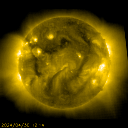|
|
Central Park Middle School, Schenectady City School District, was the first NASA Explorer School (NES) in New York State. Schenectady, west of Albany, has a rich history of scientific discovery, including Thomas Edison, inventor of the electric light bulb and founder of General Electric Company. Each day, 750 students in grades 6-8 enter the school to explore the exciting worlds of math, science, technology and more. Our Explorer School program was launched 2003, beginning a three-year partnership with NASA. As a result, we expect that student interest in math, science, and technology and related careers will increase; that students will be able to apply math, science, and technology concepts to their lives; and that the families will become more involved in school programs and student learning.
| 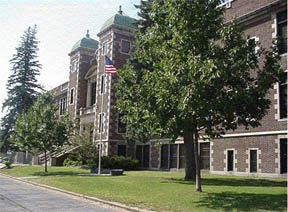 |
|
A primary goal of the NES program is to inspire the next generation. Students are fascinated with the study of space science and how their lives are affected by what is happening so far away from them. In our two years in the program, students have been involved in some outstanding learning programs. Some of these include: a visit from Dr. Jim Garvin, lead Mars Rover scientist, who showed the students a Martian rock and talked about discoveries on Mars; participating in a downlink with the International Space Station (ISS) when students were able to ask the astronauts questions about their experiences; participating in a Sounding Rocket student experiment about the effects of microgravity on liquids, and learning about space science from NASA education specialists who also teach the teachers through professional development programs.
Parent and community enthusiasm and support for our NES program continues to grow. The ISS downlink was broadcast on a local TV cable station and reported in our newspapers. We have participated in family and community events to highlight our programs. During our program "launch", parents listened to students talk about the results of their sounding rocket experiment. Our website provides an overview of many activities that parents and community members point to with pride. To expand our teachers' knowledge about NASA educational programs and how to integrate these programs into their classrooms, NASA education specialists visited our District for onsite training. Teachers were trained in such programs as Mission Geography that looks at the relationship between space science and our Earth; How High Is It that integrates math and technology with aeronautics; Living and Working in Space that eplores the biological issues of space exploration; and the Sun Earth Connection which explores the connection between the Sun and us. |
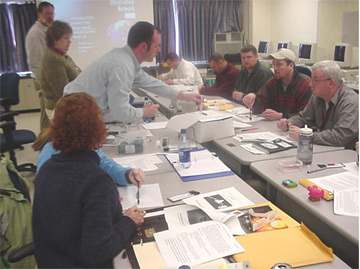 |
|
In Earth Science classes, the focus for 6th grade, students learn about the relationship between our planet and the Sun. Miss Hartkern's students use the NASA Student Observation Network (SON) to learn about solar eruptions, listen to scientists, and study images of the Sun. Through the SON students are awe struck by a their new perspectives on the Sun. Textbooks cannot capture the dynamic changes on the Sun's surface. Students discovered this for themselves when they used sunspotters to observe and record sunspots on the Sun viewed through the sunspotters. Sixth grade science teacher Miss Danielle Hartkern says, "My students are in awe of the images they see ... and of the explosions on the Sun." |
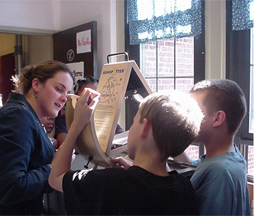 | 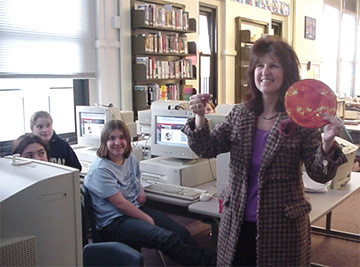 |
| Each morning, CPMS students and staff listen to Weather Central - current weather information and phases of the moon as presented by eager 6th grade "meteorologists". They record the conditions to chart tends, calculate averages, and compare findings with data available through online weather sites. They make the connection to "space weather" as well. Students learn that when there are strong solar flares and/or coronal mass ejections on the Sun, our communications and power systems can be disrupted.
What separates a hunch from an educated guess? Seventh and eighth grade students in the Explorer Club apply their math skills to the task of estimating when the 1000th comet will reach its closest approach to the Sun. Both independently and in groups students gathered information about previous comet discoveries. They developed a mathematical approach to arrive at their best guess based on the average number of days between each 100 comets that were discovered. What a creative example of integrating math and science to capture the imagination of our students while they apply higher-level thinking skills!
Our team reaches for the stars to inspire the next generation in math, science, and technology. Today's students are astronauts, physicists, astronomers, and scientists of the future who will seek to answer the questions today's scientists are posing, while discovering new questions that need answering.
NASA Explorer School team members: Rita Moore, Team Leader (Moorer[AT]Schenectady.k12.ny.us); JoMarie Fretto, Science 7; Danielle Hartkern, Science 6; Karen Moehle, Math 7; Greg Rice, Math 6; Gary Putman, K-12 Science Coordinator. |
|


